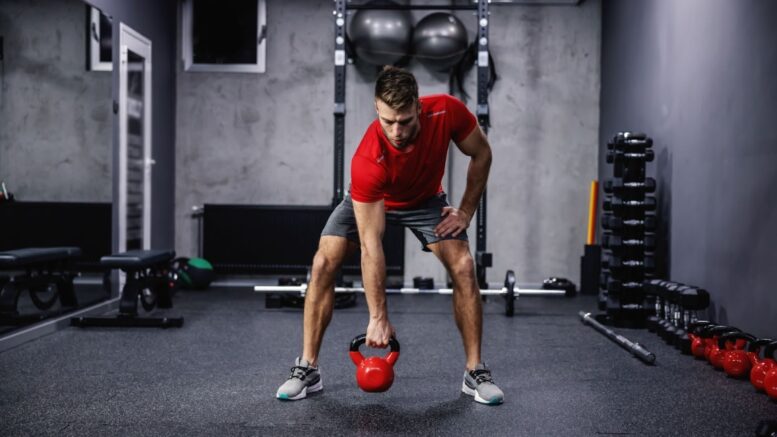Physical preparation is a crucial component of athletic performance. It’s said that well-prepared athletes are more likely to physically perform at their best and avoid injuries.
An athlete’s preparation before a competition involves various activities to enhance their performance and ensure they’re in the best physical shape possible. Physical preparation techniques for athletes can vary depending on their specific sport and training goals.
The following are some techniques for physical preparation that athletes can use to improve their performance. Continue reading to learn more.
Strength Training
Building strength is essential for all athletes. Strength training involves using resistance to strengthen the muscles and improve overall strength. It can be done by lifting weights and band resistance exercises.
Keep in mind that strength training should be done under the guidance of a qualified trainer to avoid injury and ensure proper technique. Various equipment, including free weights, weight machines, resistance bands, or bodyweight exercises such as push-ups or squats, can be used for strength training.
Rest And Recovery
Both rest and recovery are critical for athletes. Rest allows the body to recover itself after an intensive workout. Sleep is vital for both physical and mental healing. Athletes should aim for 7-9 hours of sleep each night to ensure their bodies and minds have enough time to recharge.
Plus, rest days are essential to building on all the work done on training days. Athletes should schedule at least one or two rest days each week to allow their bodies to recover and prevent overtraining.
Active recovery can help improve blood flow, reduce muscle soreness, and promote overall recovery. Recovery techniques such as foam rolling, massage, and stretching can also be helpful. There are also different equipment athletes can use for recovery; one can find out more about them over the web.
Cardiovascular Training
Cardiovascular training is important for athletes because it improves the ability of the heart and lungs to supply oxygen to the muscles. This type of training can be done through running, cycling, swimming, or any other form of aerobic exercise.
Athletes should aim to include at least 30 minutes of cardiovascular training in their routine each day. Cardiovascular exercise can help improve overall cardiovascular health and significantly decrease the chances of having heart disease while improving circulation. In addition, it may be an effective method for burning calories and promoting weight loss.
Flexibility Training
Flexibility is essential for athletes because it helps to prevent injuries and improve their range of motion.
Flexibility training involves stretching exercises that target the major muscle groups. It’s recommended that athletes engage in flexibility training at least two to three times per week, in addition to regular cardiovascular and strength training exercises.
Do note that it’s vital to warm up before stretching and gradually stretch, avoiding overstretching or bouncing, which can cause injury. Stretching should be done before and after workouts to improve flexibility. Performing stretches helps to reduce the possibility of an injury as well.

Plyometric Training
Plyometric training involves rapid and explosive movements to increase muscle power, speed, and agility.
Plyometric training involves explosive movements. This type of training is designed to improve strength and explosiveness in athletes. Examples of these exercises include box jumps and depth jumps.
The aforementioned exercises can be incorporated into various workouts and training programs. Athletes can use plyometric exercises to improve their performance in sports that require explosive movements, such as basketball, football, and track and field. Bear in mind that plyometric exercises should be performed with caution and under the guidance of a qualified trainer to avoid injury.
Balance And Coordination Training
Balance and coordination are essential for athletes because they help improve overall performance and prevent injuries.
Balance and coordination training involves exercises challenging the athlete’s balance and coordination skills. This can be achieved through single-leg squats, balance board exercises, or agility drills.
Athletes with good balance and coordination can better control their movements, maintain stability, and react quickly to environmental changes. If you’re an athlete, it’s important to incorporate balance and coordination training into your regular workout routine and to increase the difficulty of the exercises as you improve gradually.
Nutritional Preparation
Nutrition is essential for athletes because it’s the source of energy and nutrients essential for their performance.
Athletes need to consume enough calories to fuel their physical activity. How? They’ll need to calculate their daily caloric needs based on weight, height, gender, age, and activity level. The main aim is to consume a balanced diet with complex carbohydrates, protein, and healthy fats.
In addition, hydration is crucial for athletes to get the best performance out of their bodies. Athletes are recommended to consume fluids at regular intervals to keep their bodies healthy. Water is the most common fluid for hydration, yet you can choose sports drinks that contain electrolytes to replace lost minerals.
Conclusion
Physical preparation is essential for athletes who want to perform at their best and avoid injuries. By incorporating strength training, cardiovascular training, flexibility training, plyometric training, and rest and recovery into their routines, athletes can improve their physical performance and achieve their goals. It’s important to note that these techniques should be tailored to the specific needs and goals of the athlete and should be done under the supervision of a qualified coach or trainer.
